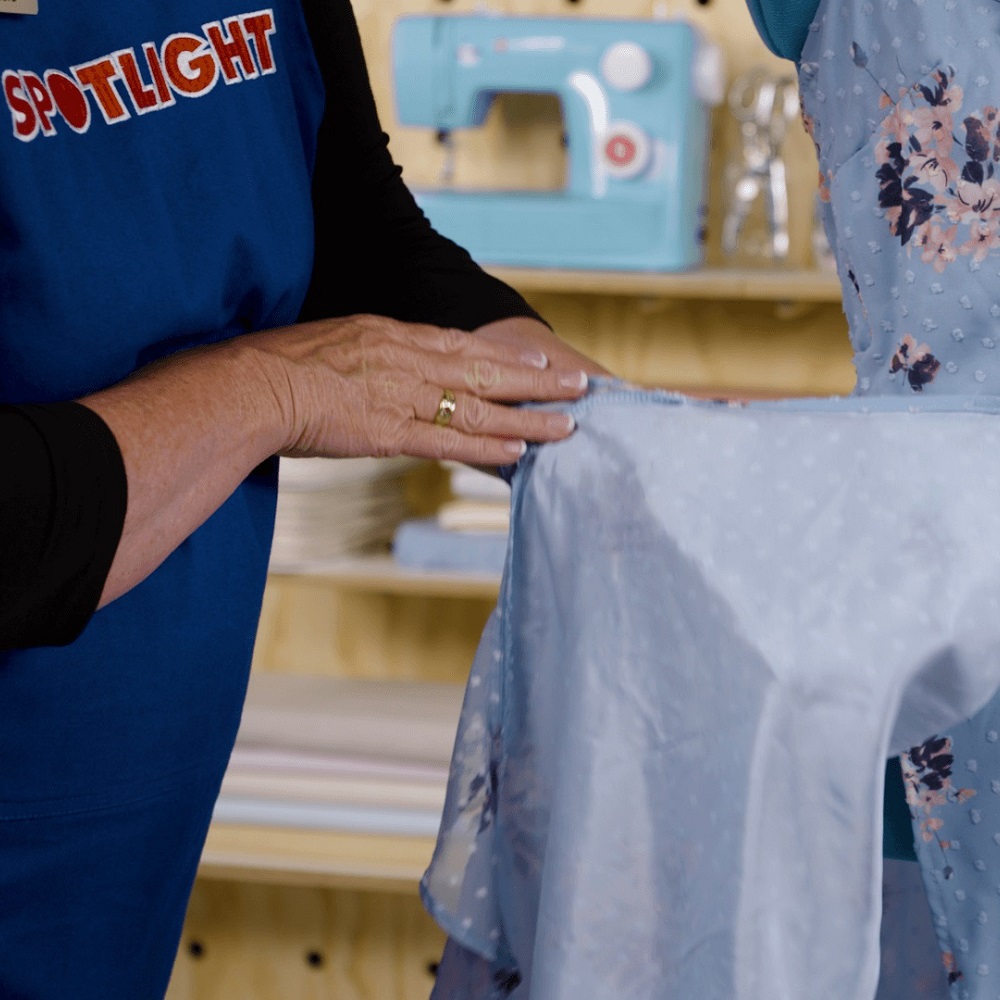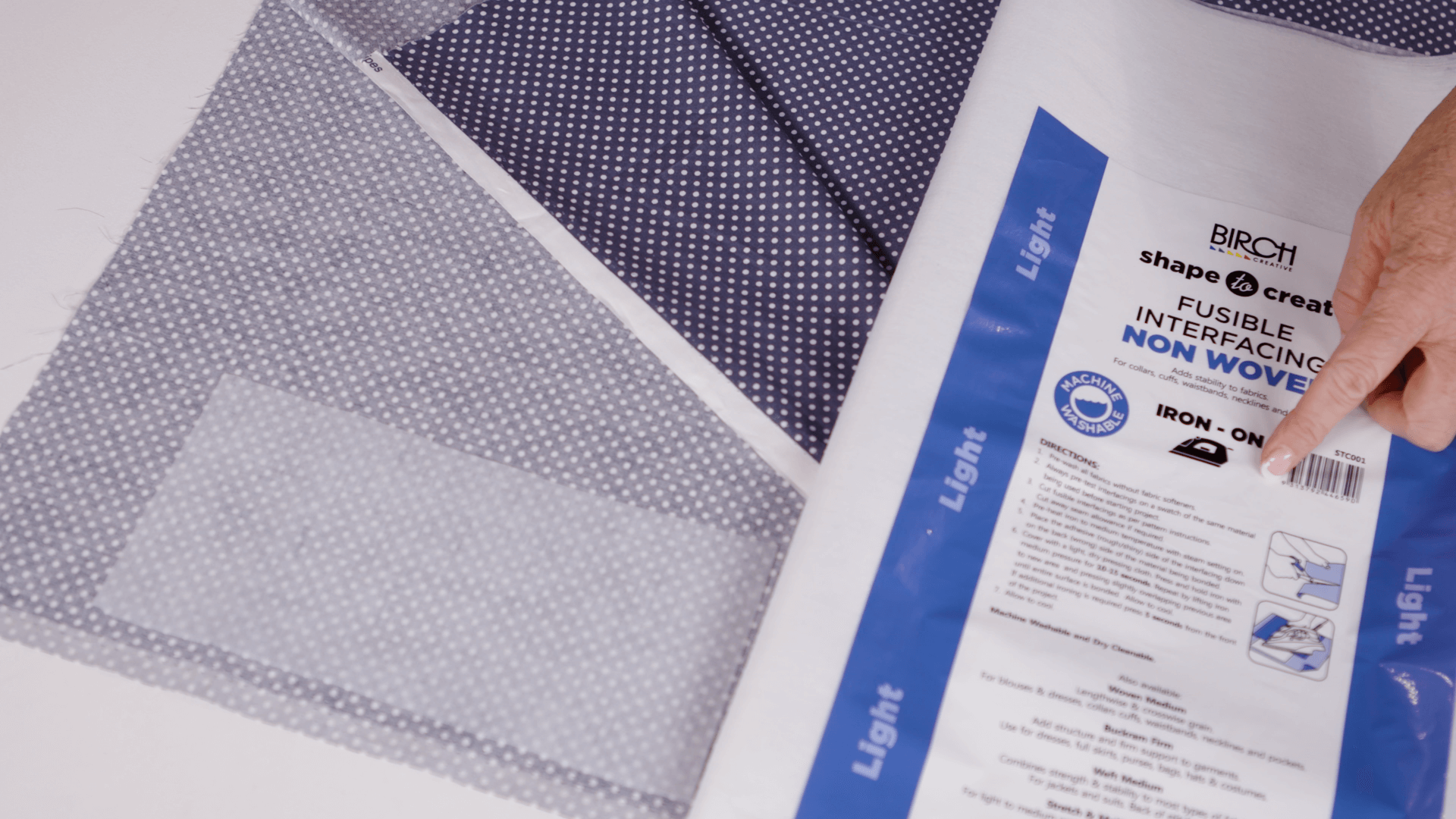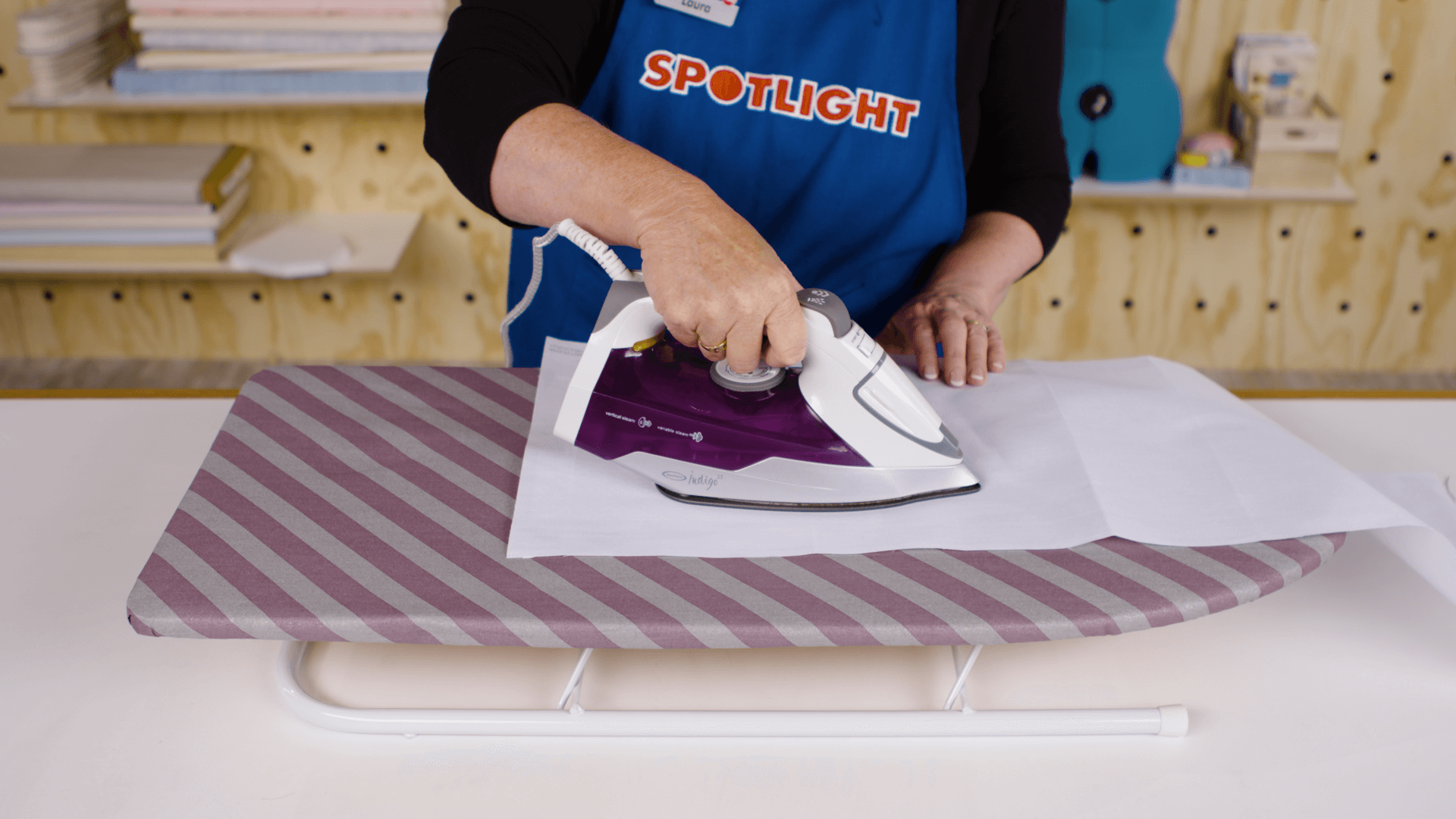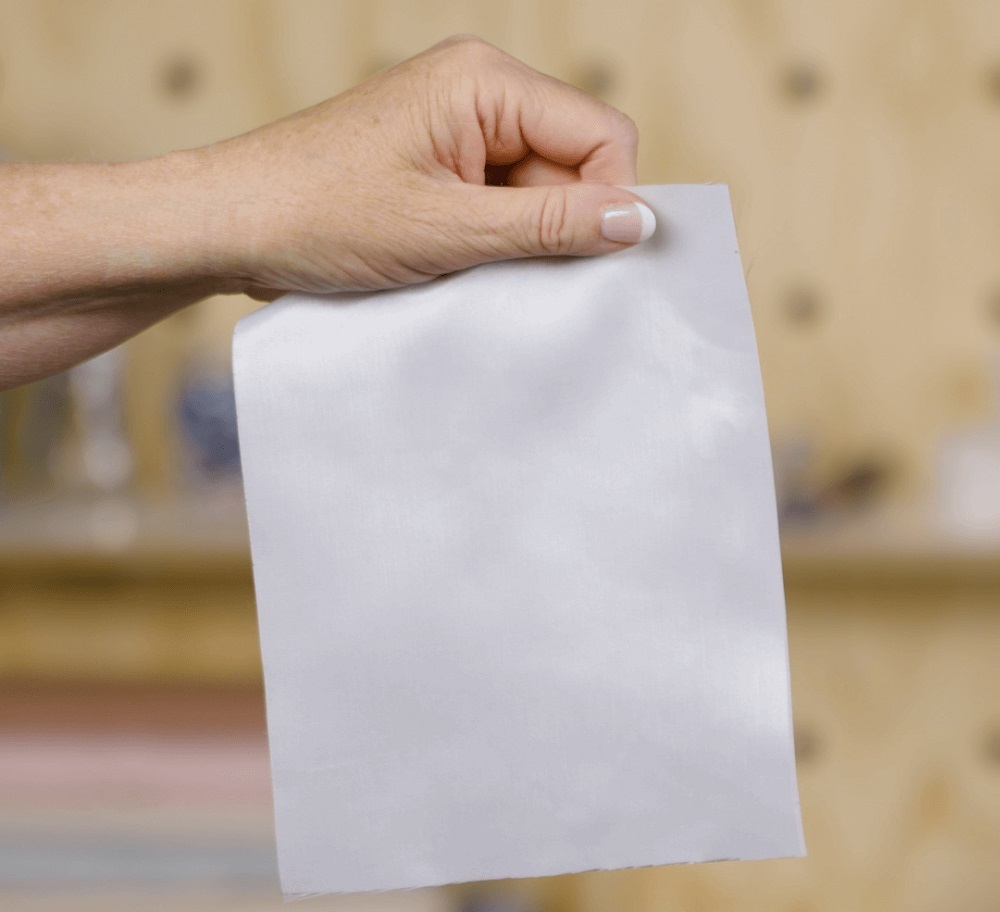 | ||
| Your browser is not supported. | ||
|
Please browse our site using any of the following options:
| ||
How to choose lining and interfacing?
Add body, dimension, and a professional finish to sewing project of all kinds with lining and interfacing.
What is the difference between interfacing and lining?
Both lining and interfacing are construction details, designed to be used in conjunction with other sewing fabrics. They essentially modify the way a fabric moves or looks.
In garment making, they are usually hidden while a piece is being worn. They are there to help maintain shape, make a garment more comfortable and wearable, add reinforcement where necessary, and provide a neat and professional finish.
Interfacing and lining are not just used in garment making. They're integral parts of other sewing projects such as quilting, applique, soft toy making, and more. Depending on the project, they can be used to add body, provide shape and stiffness, reinforce, or any number of other roles.
While they have similar qualities, lining and interfacing both have distinct qualities and functions.

Interfacing
Interfacing is used to add body and structure to a project. It provides support to a fabric where it's own thickness and strength don't allow it to perform the way the project requires. In craft projects it will stiffen elements such as teddy bear ears, or hand bag bases. In tailoring it reinforces cuffs, collars, and waistbands, and sometimes whole sections of the body of a garment.
Lining
The role of lining is generally less about structure and more about finish. Lining is used both to hide construction details such as darts and seams, and also to make items more comfortable and wearable. For example, a coat that has been lined is generally easy to slip on and off, and a skirt made of scratchy material can be made comfortable by adding a soft lining. Lining can also provide visual interest. For example, adding a printed lining in a plain jacket will add flashes of colour and a playful look.
Types of interfacing
Interfacing is a support material, designed to provide stability, body, and reinforcement to fabric. It has a broad range of applications in sewing, and as such comes in a wide variety of forms. It varies in three main ways:
Type
There are three types of interfacing:
- Woven
- Woven interfacing is very durable.
- It's weave creates movement, which means it is usually able to maintain the drape of the fabric with which it is used.
- Because it is woven, this interfacing has a distinct grain. For this reason it needs to be cut in a way that takes the grain into account.
- Woven interfacing can fray, so it needs to be handled with care when cutting, sewing, and finishing.
- Non woven
- This interfacing is made of fibres that are bonded together without being woven.
- It can be cut in any direction without having to take a grain into account, and it does not fray. This makes it faster, and easier to work with, and often cheaper as there is less wastage.
- Non woven interfacing does not provide the same movement and drape as woven interfacing, so it should be used for projects where this is not as important.
- Non woven interfacing is available in the widest range of weights from wispy thin, through to as thick as cardboard. You'll be able to find one that is perfect for what your project requires.
- Fleecy non woven interfacing can be used for quilted craft projects, to add a pillowy softness and bounce.
- Knit
- Knit interfacing has some stretch to it, so it's ideal for use with knit fabrics.

Weight
Interfacing is available in varying weights, each providing a different level of movement, stiffness, and support to your fabric. If you're using a pattern, make sure you check the weight of interfacing it calls for.
The lightest weight interfacing is so fine that you can easily see through it, and the heaviest weight is as thick as cardboard. Be sure to choose an interfacing that provides the qualities your project needs while working with your chosen fabric. As a general rule of thumb, use light interfacing with light fabric and vice versa.
Application
Interfacing can be applied in two ways:
- Sew in
- This is the traditional way of adding interfacing, and it is still preferable in many cases. The interfacing is cut to the same shape as the fabric it is supporting, and sewn in as the garment is created. This means that the interfacing and fabric lie on top of each other but are not joined anywhere apart from the seams.
- This method is ideal when you don't want to alter the feel and texture of your fabric, and when you want your fabric and interfacing to be able to move independently of each other.
- Sew in interfacing is more forgiving, as it can be removed if mistakes are made in the process of making a garment.
- Heat bonding
- Fusible interfacing can be ironed onto fabric prior to sewing, and literally bonds to the fabric itself making it thicker and stiffer. Small glue dots on one side of the interfacing will melt when ironed onto the 'wrong' (back) side of the fabric, and the two are permanently fused together.
- The way that they are bonded means that the interfacing will change the way the fabric feels to the touch, and the way it moves. This can be a desirable quality, but if you're not sure, test a swatch first to see if you're happy with the combination.
- Not all fabrics can handle the application of fusible interfacing. Lace, metallic fabrics, and velvet, for example, should not be used with it.
- Once fusible interfacing is applied it is difficult to impossible to remove, so it's important to use it carefully and be sure you are happy with the way it looks and feels before committing to adhering it to your fabric.
Interfacing will come with instructions for use and care. Be sure to refer to these before you begin your project.

Types of lining
If you're taking the time to make a beautiful handmade garment, it's worth putting in the extra effort to line it. It will make the finished piece more durable, more comfortable, and give it a more professional finish.
Lining fabric
You have a variety of options when it comes to lining fabric, and each one has different qualities. Some of the most readily available and widely used are:
- Rayon
- Rayon is a synthetic fibre which makes it inexpensive and readily available.
- It does not create static in the same way that some other synthetic fibres can, making it a popular choice for garment makers.
- While it is not as breathable as natural fibres, it still feels smooth and silky against the skin.
- Acetate
- Acetate is a type of rayon with a distinct sheen and silk-like finish.
- It does not wrinkle easily, making it comparatively easy to care for between washes, but it does need to be dry cleaned when washing is required.
- Polyester
- Polyester is another synthetic fibre, and is both durable and soft.
- It is available in an enormous array of colours, so it is easy to find one that's a perfect match for your project.
- Interlock, stretch, or Spandex
- These stretch lining options work well with knits and other stretchy fabrics.
- They can be two or four way stretch, so be sure to check how your chosen lining moves and how it interacts with your fabric.
- Cotton
- As a natural fabric, cotton is breathable and comfortable to wear.
- It doesn't generally have a lot of stretch, unless it is blended with other fibres.
- Cotton is easily washable so it is a good choice for children's clothing, or items that will get a lot of everyday wear.
- Silk
- Silk is a lining choice that breathes, and feels soft and luxurious against the skin.
- It is the most expensive lining option, but is worth the price tag if you're creating special pieces.
- Silk blends can reduce the cost of your lining while retaining some of the desirable qualities of the fibre.
Interlining
Some sewing projects call for the addition of interlining.
This is a layer of lining between the outer fabric and inner lining.
It is generally used to add greater warmth to a garment, but can also be used to provide further thickness and structure.
Whether you're looking for lining or interfacing, always consider how it will interact with the fabric you have chosen.
- Where possible, test how they will feel together by basting swatches, or testing drape in your hands.
- Aim to pair lightweight fabrics with lightweight linings and vice versa.
- Consider the colour of your linings and interfacings as well. Again, pair light with light and dark with dark where possible.

Want to look at more Sewing & Quilting options?
Check out Spotlight's range of sewing & fabric ideas online, visit your local store or contact one of our experts for assistance.




